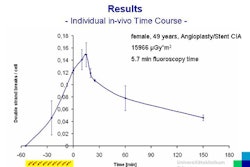A new study from the U.K. confirms previous research regarding the equivalency of full-field digital mammography (FFDM) with analog film-screen mammography. The two techniques had roughly equal detection rates when images were printed and read in a hard-copy environment.
Dr. Sarah Vinnicombe and colleagues at St. Bartholomew's Hospital in London compared FFDM with hard-copy image reading to film-screen mammography (FSM) within their institution's screening program, the Central and East London Breast Screening Service (CELBSS), which screens women ages 50 and older once every three years. Their findings were published in this month's edition of Radiology (May 2009, Vol. 251:2, pp. 347-358).
Between January 2006 and June 2007, the service performed 8,478 FFDM and 31,720 FSM mammography screening exams. Most of the exams were conducted in two mobile units, each with a Lorad M-IV system (Hologic, Bedford, MA). The remaining exams were performed at St. Bartholomew's, which has four FFDM systems: three Senographe DS units (GE Healthcare, Chalfont St. Giles, U.K.) and a Selenia system (Hologic). FFDM images were printed with a Kodak 8900 laser hard-copy printer (Carestream Health, Rochester, NY) and were read with the same viewing conditions and the same multiloaders as the FSM exams.
Two of six radiologists read each image, whether film-screen or digital. All but one of the readers had more than 10 years of experience in breast imaging and read a minimum of 5,000 screening mammograms per year.
Vinnicombe's team found 263 cancers. After adjusting for age, ethnicity, area of residence, and type of referral, the team found no differences between FFDM and FSM in terms of detection rates (0.68 per 100 screening mammograms versus 0.65, respectively), recall rates (4.8% versus 4.4%), positive predictive value of an abnormal mammogram, or characteristics of detected tumors.
Cancer detection rates, recall rates, and PPVs of an abnormal mammogram by screening modality
|
||||||||||||||||||||||||||||||||||||||||||||||||||||||||||||||||||||||||||||||||||||||||||||||||||
| Note: Numbers in parentheses are 95% CIs. Interactions between screening modality and age at screening were not statistically significant (p = 0.54, 0.49, and 0.37 for adjusted detection rates,
recall rates, and PPVs, respectively). *P-value for comparison between SFM and FFDM. †Adjusted for age, ethnicity, type of referral, and area of residence. ‡31,720 SFM and 8,478 FFDM screening examinations. §Smaller numbers due to missing information on ethnicity (27,598 SFM and 7,157 FFDM screening examinations). ¶1,404 SFM and 406 FFDM positive screening mammograms. #Smaller numbers due to missing information on ethnicity (1,182 SFM and 334 FFDM recalls). Table courtesy of the Radiological Society of North America. |
||||||||||||||||||||||||||||||||||||||||||||||||||||||||||||||||||||||||||||||||||||||||||||||||||
The researchers also performed a meta-analysis of published findings comparing FFDM and FSM with their own data, conducting a computer search on PubMed, Medline, and Embase to find studies published in English-language journals between January 2000 and February 2008. Data from seven studies from eight publications were included in the group's meta-analysis. Click here to view a table of the clinical studies.
"Our meta-analysis was consistent with FFDM performing at least as well as conventional [FSM]," Vinnicombe and colleagues wrote. "Subgroup analyses by age provided some evidence of FFDM having a slightly higher detection rate than [FSM] at age 60 years or younger, equivalent to an extra 11 breast cancer cases detected at FFDM per every 10,000 screening examinations, but this finding needs to be confirmed in future studies."
By Kate Madden Yee
AuntMinnie.com staff writer
May 7, 2009
Related Reading
CAD boosts FFDM performance, March 4, 2009
FFDM performs well versus analog for screening, studies show, January 6, 2009
Digital mammograms take longer to read, study suggests, January 6, 2009
DMIST: Women under 50 with dense breasts benefit from FFDM, January 29, 2008
RSNA studies delve deeper into DMIST results, December 14, 2006
Copyright © 2009 AuntMinnie.com


















